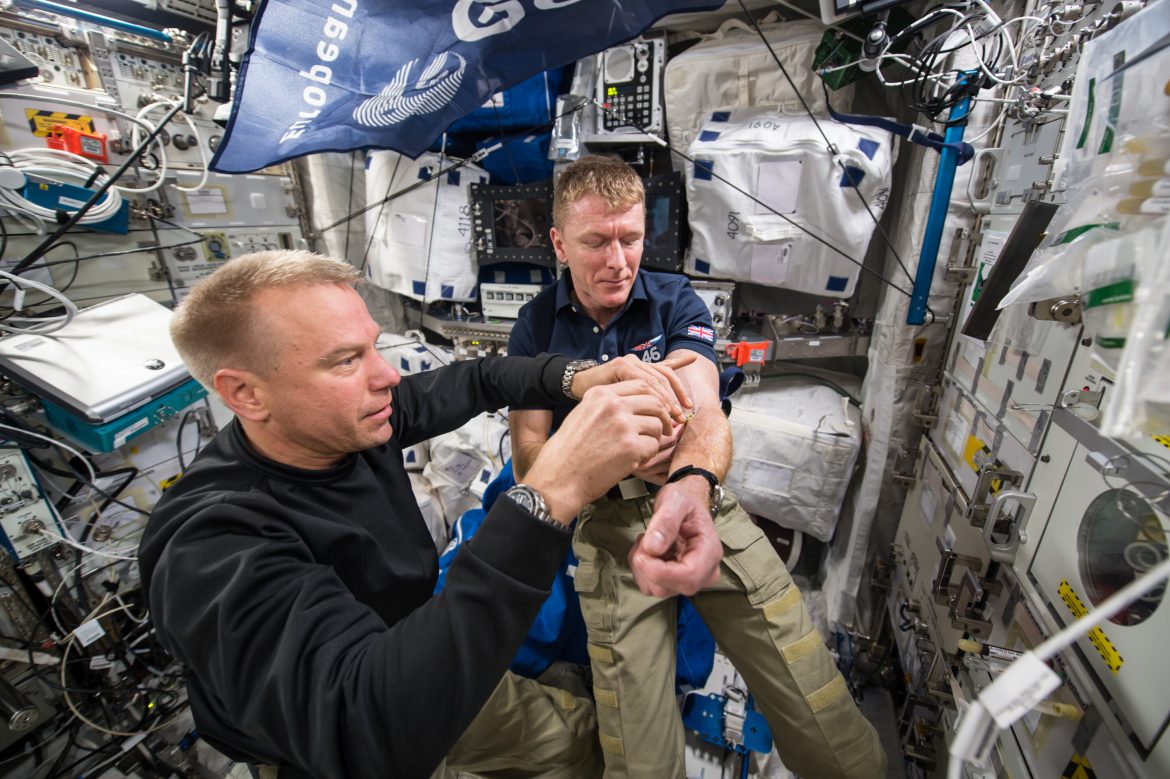
Space Anaemia
The effects of space travel on the human body, which has evolved to live on Earth, has long been a popular research subject.
Since our species began to spend long periods outside the Earth, researchers have noticed a consistent and interesting loss of red blood cells among astronauts.
The cause of this phenomenon, known as “space anaemia” has been a mystery, until recently. Some experts have argued that space anaemia is merely a short-term phenomenon and that it was a temporary result of fluid changes in our body under microgravity.
However, a new study points to a more destructive and persistent mechanism. Prior to this study, space anaemia was thought to be a rapid adaptation to the shifting of fluids into the upper part of an astronaut’s body under low gravity upon arrival in space. Astronauts lose 10 percent of the fluid in their blood vessels this way. The previous assumption was that the astronaut bodies were also rapidly destroying 10 percent of red blood cells to restore the fluid/cell count balance and that the number of red blood cells returned to normal after 10 days in space.
Instead, the new research revealed that the destruction of red blood cells was primarily caused by being in space, not just a result of fluid shifting. The researchers demonstrated this result by directly measuring red blood cell destruction in 14 astronauts during their six-month space missions.
Measurements were made with blood tests for iron and breath tests for carbon monoxide. For each molecule of carbon monoxide, you exhale, one molecule of the iron pigment in red blood cells is destroyed, making it a highly compatible indicator of red blood cell loss.
The astronauts involved in the study produced and destroyed around 2 million red blood cells per second on the Earth’s surface. During their time in orbit, however, their bodies destroyed about 3 million blood cells per second.
By the time they returned to Earth, five of the 13 astronauts had reached clinically diagnosable levels of anaemia, defined as the condition in which the body does not have enough red blood cells for its physiological requirements.
About three or four months after landing, their red blood cell levels returned to normal. But even one year after the space flight, the astronauts’ bodies continued to destroy 30 percent more red blood cells than before the space travel.
Fortunately, when your body is virtually weightless in space, it’s okay to have fewer red blood cells. But when you land on Earth or other planets or moons, the anaemia will affect your energy, stamina, and strength, which may pose a risk for mission objectives.
The discovery has several implications. First, it supports the need for screening astronauts or space tourists for any existing blood or health conditions that may be affected by anaemia. Second, the results suggest that longer space missions end up in worse anaemia cases, which will possibly affect longer missions to the Moon and Mars. Third, increased red blood cell production requires a new and adapted diet for astronauts. Finally, how long the body can sustain this higher rate of red blood cell destruction and production is yet (and needs) to be figured out.
REFERENCES
- 1. https://phys.org/news/2022-01-space-red-blood-cells.html
- 2. https://www.sciencealert.com/space-anemia-is-real-and-scientists-just-worked-out-why
